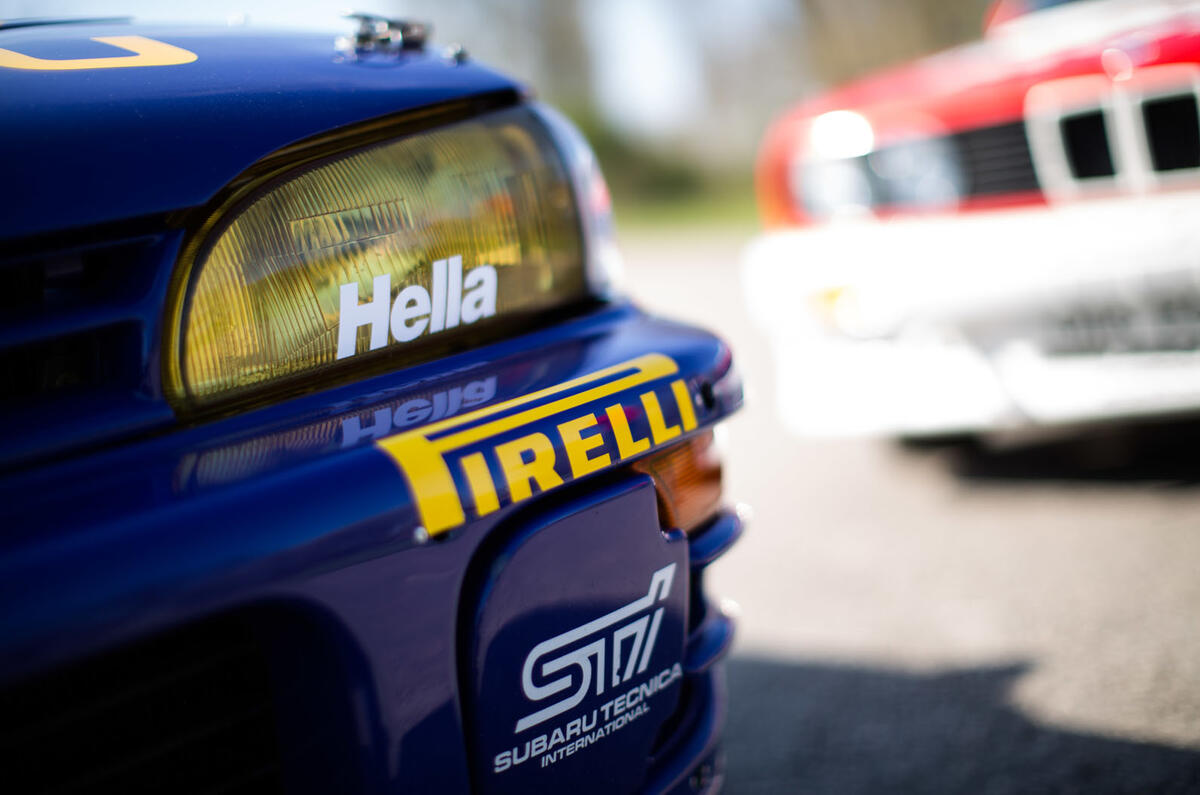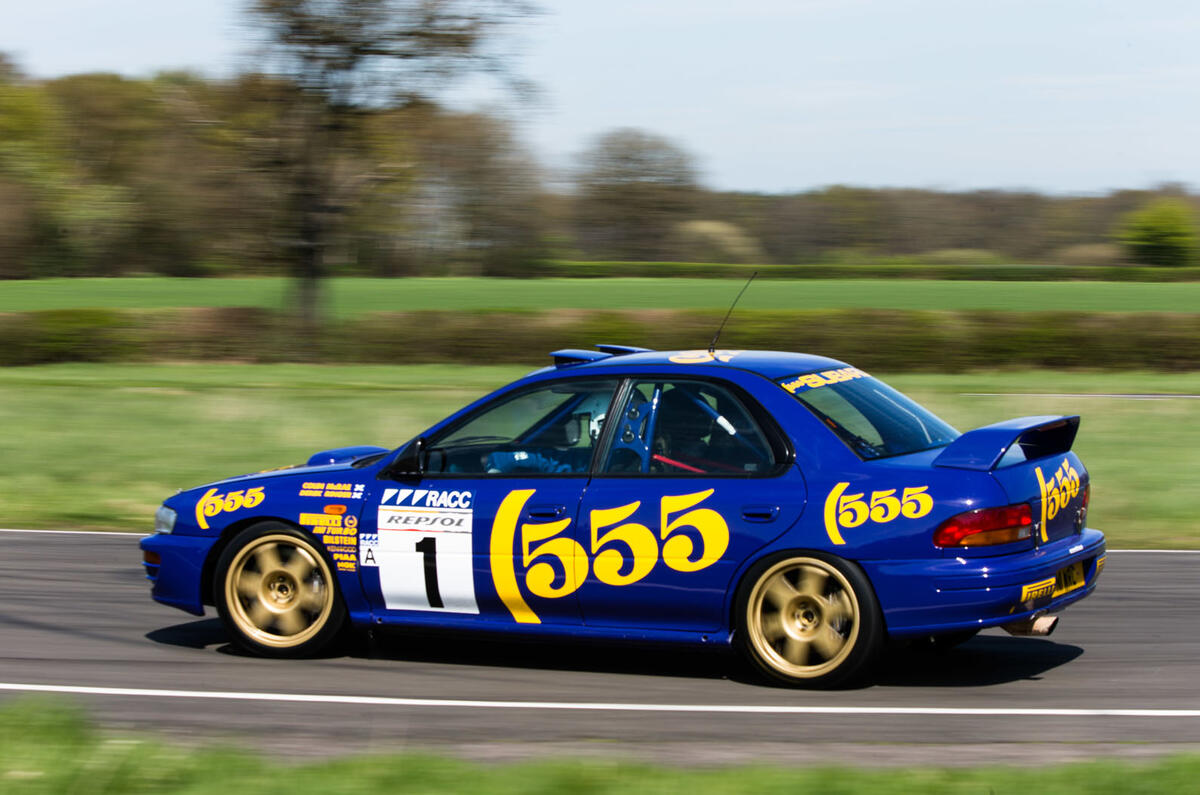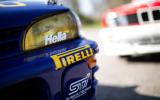We’re at a remote track in the Staffordshire countryside with Prodrive technical director David Lapworth, rally mechanic ‘Stretch’ and Prodrive PR man Ben Sayer.
It’s an informal occasion, just two box trailers carrying two rally cars, and a lot of Prodrive fans, all here to celebrate 30 years of Prodrive, the company formed in 1984 by David Richards (right) and Ian Parry from a small consultancy business which has since gone on to become one of the most successful independent motorsport teams of all time.
The cars they have brought along represent two separate decades in Prodrive’s timeline, but both are genuine icons – and they’re letting me drive them. The first is one of the E30 M3s which Prodrive built and ran for the BMW Rally team from 1987 to 1990. This car won the 1990 French Rally Championship in the hands of François Chatriot.
The second, from the 1990s, is Colin McRae’s Group A Subaru Impreza, the car in which the flying Scotsman won Rallye Catalunya and the last of the Group A cars before new World Rally Car regulations came into force in 1997.
These are two radically different machines. The rear-wheel-drive BMW was in its element on asphalt events but struggled on gravel, while McRae’s four-wheel-drive Impreza was good on, well, just about anything.
The BMW engine is a full-house screamer, producing just under 300bhp (exact figures aren’t recorded) and revving to 9000rpm. The Subaru’s warbling, 320bhp boxer engine revs easily to 8000rpm – although it sounds like it’s only doing around half that – and it easily reaches the rev limiter. In the end, I’m advised to “just keep changing gear”.
It’s strange clambering into the great man’s Impreza for a spin around the Curborough sprint course. Like F1 cars, these things are personal, tailor-made to fit a driver and his preferences. The indicator switch, for example, is a simple chrome toggle at the end of a carbonfibre stalk because “Colin liked it that way”.
Two knobs on the dash control the front and centre active differentials. Predictably, McRae liked the front wound off to promote oversteer, something also helped by the fact that the rear axle is, astonishingly, solid, like a go-kart’s, and with no diff at all.
Both cars have Prodrive-designed six-speed dog ’boxes, which have no synchromesh so shifting doesn’t require the clutch, just a swift lift. The Subaru’s carbonfibre dash is peppered with contact breakers and a few knobs, while in front of the driver there’s just a rev counter and temperature gauge.
It has a chunky, brutish feel, the engine is guttural and from the outside the exhaust gives off a harsh crackle. The clutch is heavy and the brake pedal feels solid like a footrest, working six-pot calipers on the front and four-pot items at the rear.
The power steering has plenty of feel thanks to fat 225/650-19 Pirelli P Zeros which may be of dubious vintage but nevertheless grip well. The warbling tickover is deceptive, and under acceleration the Impreza engine runs out of revs deceptively quickly while sounding weirdly unhurried.
The gearshift is instrument-like in its precision, with no slack and a short, metal-to-metal action. Oversteer is within easy reach – even on dry asphalt and slick tyres. Just a lift gets it started, then power to finish off the bend, the driven front wheels keeping things stable. It’s easy to see how, in the hands of a master, this snorting, brutish thing would be so ballistic.
As a ballet dancer is to a mud wrestler, so the M3’s character is completely different. Dainty, fine, almost delicate, it feels just as planted but lighter than the Subaru’s 1200kg, at a whisker over a tonne. The interior is busier, the big Stack rev counter joined by a rash of smaller dials, but the same aircraft-style contact breakers pepper the centre console.
Unlike the Subaru, which started life as a basic road car before being stripped and transformed into a purpose-built competition machine, the M3 is a motorsport thoroughbred, with road cars initially sold only to meet the homologation numbers of 5000 units for Group A racing.
The 2.3-litre engine was originally built by BMW Motorsport to touring car specification but recalibrated with new camshafts to favour torque delivery for rallying. On both cars, the suspension is by Prodrive with parts either made from scratch or modified, but the configuration remains standard under the regulations.
The Subaru has MacPherson struts all round, while the BMW sits on front MacPherson struts with semi-trailing arms and coilover dampers at the rear.
A Getrag-based Prodrive six-speed competition dog ’box is similar to that of the Subaru but has a creamier, slicker shift. The M3 is easier to acclimatise to than the Impreza and the sound of the engine is simply sensational, starting at the bottom of the rev range with a rasp and rising to a lusty howl at full chat.
On this day, the M3 was more tail happy than most – thanks probably to those vintage Pirellis again – but its agility and nimbleness still shone through, making it easy to flick through the twisty bits on the short course.
The M3 darts into corners and smoothly oversteers out under power. A visiting Patrick Snijers, who won the Belgian championship in another Prodrive M3 in 1988, loves it.
“The best-sounding engine I’ve ever driven,” he enthuses. “I liked the car the first moment I drove it; it’s so responsive, the perfect car to drive.”
Despite its motorsport breeding, the M3s were built by Prodrive from shells prepared by German specialist Matter. The rally cars actually evolved from touring cars but with a different roll cage.
Compared with a road car, both Subaru and BMW were light. There’s no heater in either car, for example, but they are ‘proper’ cars. Substitute plastic panels or pseudo spaceframes were not allowed, either.
Both are immaculately maintained masterpieces but still used from time to time, as they should be. Prodrive won six world championships, including those of Colin McRae and Richard Burns. It had already racked up 50 rally victories by the time McRae joined in 1991.
Today, Prodrive runs four Aston Martin works cars in the World Endurance Championship and is continuing to develop the Global Rallycross Mini RX, as well as running a thriving business selling Aston Martin race cars and Mini rally cars to privateers.
Over the years, it has moved on from being ‘just’ a motorsport team and has diversified into mainstream automotive technology, licensing, merchandising and lightweight composites.
Soon, the company is moving from its original premises adjacent to the M40 to a new site nearby. Fans are sad at the thought, but it’s a fitting start to the next decade for a company that has prospered by not standing still for long.
The past 30 years of Prodrive - timeline
1984 - Prodrive is formed by David Richards and Ian Parry. The Rothmans Rally team is established and takes seven wins in the European Rally Championship.
1987 - Rally partnership with BMW begins. Bernard Béguin takes a Prodrive-prepared M3 to the company’s first WRC win in Corsica.
1988 - Frank Sytner wins the British touring car crown in an M3; the company also wins 13 European rallies.
1991-1992 - Prodrive scores its 50th rally victory as Colin McRae joins the team and wins two British championships in his Subaru Legacy.
1995 - McRae takes the WRC drivers’ title and Subaru the manufacturers’ title after a sensational victory on Rally GB.
1996-1997 - Subaru takes the manufacturer’s title two years running
2000 - Having returned to the BTCC with Ford in 1999, the three Prodrive-prepared Mondeos dominate the series, with Alain Menu taking the spoils.
2001 - Richard Burns becomes the first Englishman to win the WRC drivers’ title. Prodrive launches the Subaru Rally Team USA and wins the championship.
2003 - GTS class win at Le Mans by the Prodrive Ferrari team. Takes sixth WRC title, with Petter Solberg securing the drivers’ crown.
2007 - Having brought Aston Martin back to endurance racing with the DBR9 in 2005, Prodrive takes the British sports car manufacturer to class victory at Le Mans.
Read Autocar's history of the hot Subaru Impreza
History of the BMW M Division - picture special
Get the latest car news, reviews and galleries from Autocar direct to your inbox every week. Enter your email address below:











































































Add your comment
No mention of the P2?
what about Mini WRC???